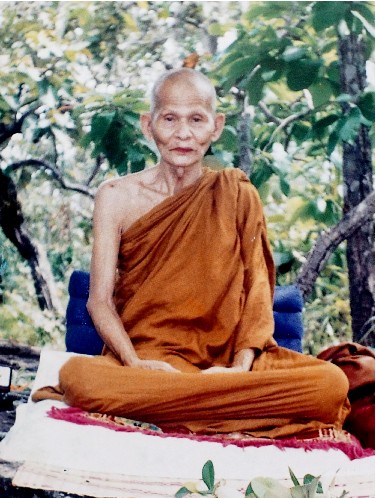
28 Mar The Life and Legacy of Luang Pu Khamphan Kosapanyo
The Life and Legacy of Luang Pu Khamphan Kosapanyo
The Monk Who Could Call Relics from the Depths of the Earth
In the quiet province of Nakhon Phanom, nestled among rice fields and humble villages, a boy named Khamphan Srisuwong was born on January 10, 1915. From a young age, he displayed a natural inclination toward calmness, contemplation, and an unshakable presence—traits that would later define his path as one of Thailand’s most revered forest monks.
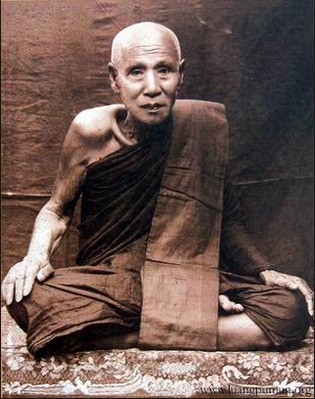
Above: Ac Sao (Teacher to Lp Kampan and advisor to Ac Mun)
At 17, he entered the monkhood as a novice at Wat Sri Bunruang in Na Kae District, where he began studying ancient Dhamma scripts and practicing meditation. But it wasn’t until he encountered the legendary forest master Phra Ajarn Sao Kantasilo that his spiritual life truly ignited. From Ajarn Sao, Luang Pu Khamphan learned the profound art of mindfulness of breathing, and the wisdom of contemplating the five aggregates (khandha)—a teaching that became the foundation of his life’s practice.
A Wandering Monk with a Mission
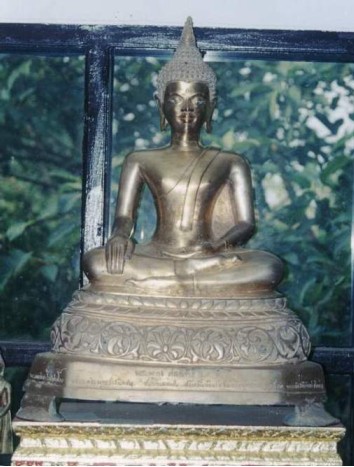
Above: Image of the Prah Phutthasaksit
In true Thai forest monk tradition, Luang Pu Khamphan went on tudong—wandering deep into forests and across provinces. He studied under white-robed ascetics and meditated in solitude, refining his mind and sharpening his inner clarity. After spending years in the wild, he returned to teach and serve his local community.
In 1952 (BE 2495), together with a small group of families, he founded the village of Ban Mahachai, where he built Wat That Mahachai—a temple that would one day become a spiritual beacon in the Northeast. With his own hands and guidance, he constructed the now-famous Phra Phutthasaksit Buddha image, modeled after a sacred statue believed to have originated from a cave in Mahachai, Laos.
During the casting of the statue, villagers donated precious metals. Miraculously, the gold did not disperse randomly but flowed to the face and chest of the Buddha image—right at the heart. It was said this was due to Luang Pu’s powerful meditative aspiration—an early sign of his baramee (spiritual power).
The Power of the Pathat Withat
But perhaps the most fascinating aspect of Luang Pu Khamphan’s spiritual journey was his rare ability to attract and collect relics known as Pathat Withat (ปฐาตวิถี)—mystical white stones believed to be gifts or blessings from Naga beings.
These relics are no ordinary stones. They are said to:
Enhance baramee (prestige and spiritual power)
Attract wealth and luck
Emit metta (loving-kindness), calming people and surroundings
Offer protection on par with what was granted to the Buddha by the Naga during his enlightenment under the Bodhi tree
Devotees close to Luang Pu reported seeing these relics appear during meditations or retrieved from remote forest locations. Those who received them experienced unexpected turns in fortune, business growth, and even miraculous escapes from danger. It is said the stones “choose their owner” and stay with those who walk with sincerity.
Teacher, Builder, Sage
Throughout his life, Luang Pu Khamphan was more than just a monk. He was:
A teacher of Pali and Dhamma
A master of meditation
A protector of ancient Thai Buddhist culture
And a spiritual leader whose life inspired thousands
His gentle demeanor, clear mind, and unwavering discipline made him not only a beloved figure in Nakhon Phanom, but a spiritual landmark in Thai Buddhism.
He passed away after 89 years of life and 59 years in monkhood. But his presence can still be felt in the quiet halls of Wat That Mahachai, in the chants of monks continuing his legacy, and in the mystical white stones left behind—tokens of Naga guardianship and timeless merit.
Transcribed & Copyright
Old City Amulets
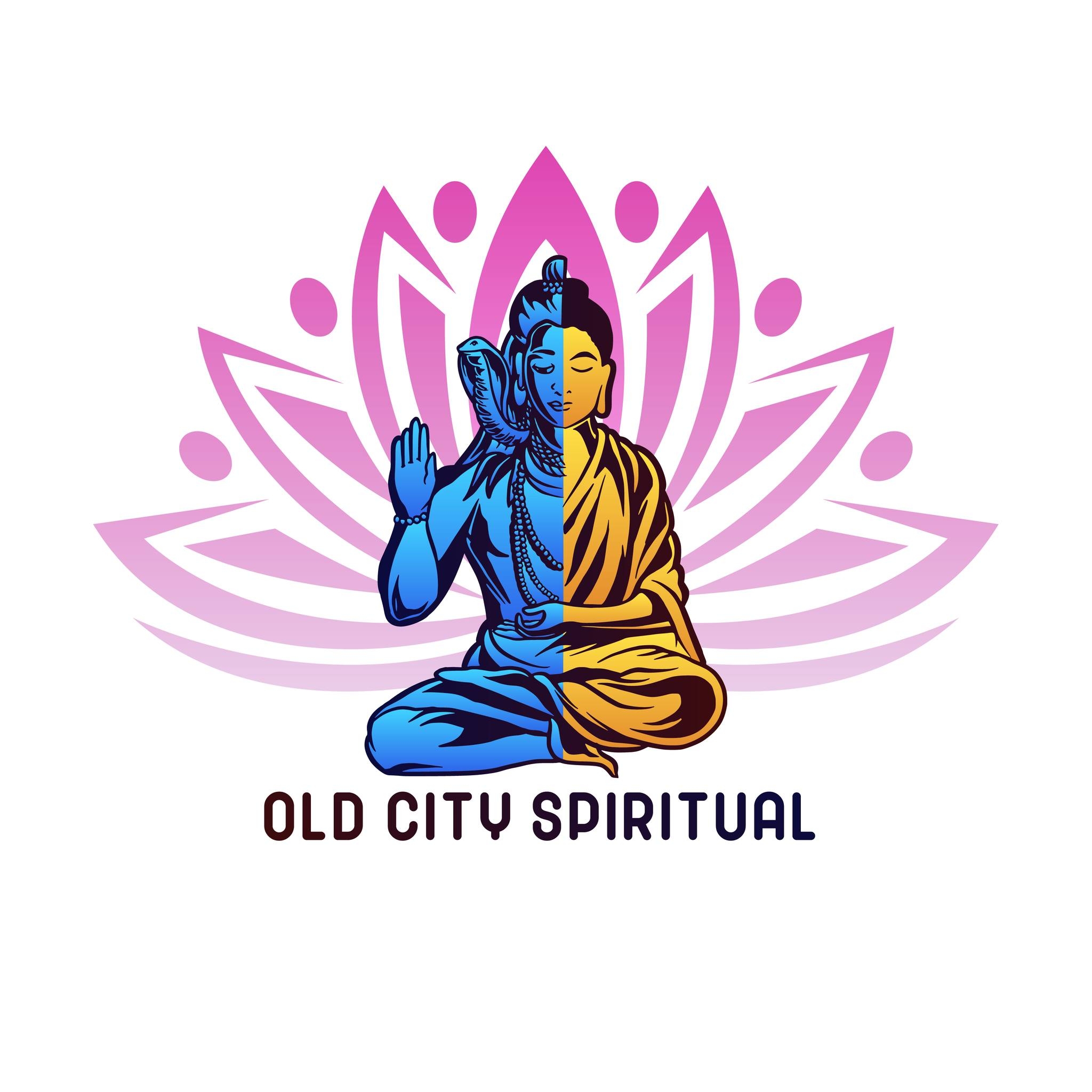


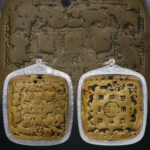
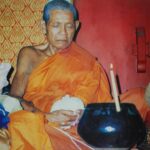
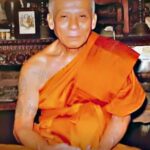
No Comments